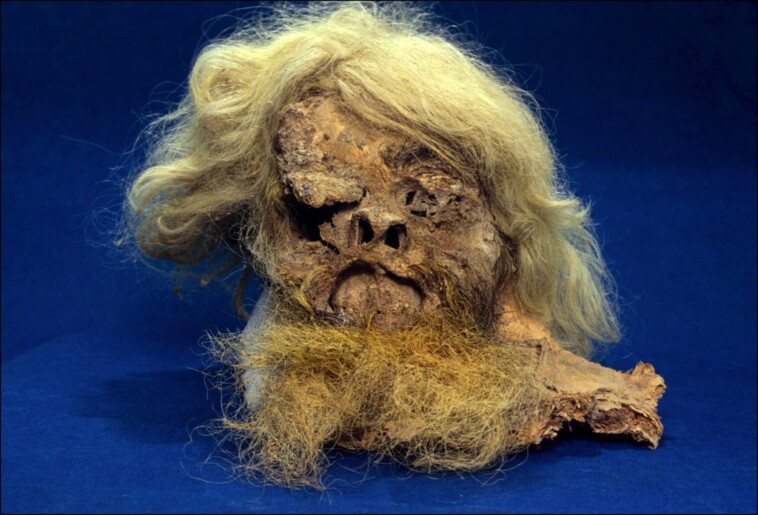Haunting photos captured the final poses of a handful of Persian salt mine workers whose remains languished inside a salt mine for thousands of years before they were unearthed.
The six corpses – known as the “Saltmen” – were naturally mummified and preserved in the Chehrābād salt mine, near the village of Manzelou in northwest Iran, according to RealClear Science.
The first saltman – complete with a long white beard and a single gold earring, as well as a set of iron knives – was accidentally unearthed by miners in 1993.
The mummy, now known as Salt Man 1, was still wearing one of his leather boots and had some traces of woolen trousers on his leg, Atlas Obscura said.
Chilling photos show the man’s preserved head and boot-clad leg inside display cases.
The man is believed to have died in the mine around 300 CE. His remains were buried in the middle of a 148-foot tunnel.
Eleven years later, in 2004, a second Salt Man was found just 50 feet from where Salt Man 1’s remains were uncovered. In 2005, two more mummies – including the remains of a 16-year-old boy – were found in another tunnel.
Beginning in 2006, the Iranian Cultural Heritage News Agency partnered with different cultural institutions to lead thorough excavations of the Chehrābād site, which was closed for mining in 2008.
By 2010, a total of six corpses had been found in the salt mine.
The bodies came from various time periods, with the oldest dating back to 9550 BCE – more than 10,000 years ago.
Like Salt Man 1, all of the remains were remarkably well-preserved by the salt that surrounded them.
The lack of oxygen deep inside the mine also prevented the bodies from decomposing.
Four of the Saltmen are kept at the Archaeology Museum in Zanjan, while Salt Man 1 is on display at the National Museum of Iran at Tehran.
The sixth corpse, which was found in 2010, was left half-stuck inside the salt mountain, Atlas Obscura said.
Over the years, scientists have increased the number of potential Saltmen from six to eight, as further examination revealed the detached body parts of other individuals.
Close analysis also showed that all of the Saltmen bore signs of fractures and compression injuries — leading scientists to conclude that they were all likely killed in mining collapses.
The 16-year-old mummy was even found with his hands still raised above his face, as if he was surprised by a sudden fall or other threat.
The fifth salt man was more well-preserved than the others, which allowed scientists to examine his organs up close.
His intestines were riddled with tapeworm eggs, which suggested that his ancient diet included raw or undercooked meat.
The discovery marked the earliest evidence of ancient intestinal parasites in Iran, according to a 2012 research paper published in the The Journal of Parasitology.
Despite the wealth of information contained in the Saltmen’s remains, questions about their official cause of death – as well as how many more of them there could be inside the mine – remain a mystery.








